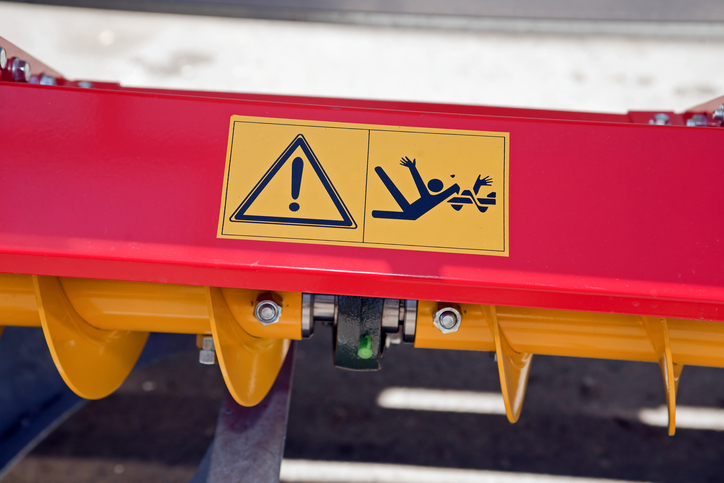
Safety Critical Medicals Explained

Accidents in the workplace can occur in many ways and at different times. However, some sectors, such as the manufacturing industry, are prone to a higher risk of accidents than others.
According to the HSE, a fatal employee accident costs a business just shy of £100k. Non-fatal injuries cost a business £1,400 on average, but injuries that incapacitate an employee for at least 7 days cost 4X as much (£5,100). Statistics show that 3 in 4 of all company-reported accidents (usually the most severe) incapacitate the worker for 7 days or more.
To protect their workforces, comply with legislation and avoid litigation, it is essential that companies in the manufacturing industry take steps to perform Safety Critical Medicals for all employees who need them.
The rules on Safety Critical Medicals
If your business has workers performing ‘Safety Critical’ roles, under current health and safety legislation, those workers must undergo annual Safety Critical Medical (SCM) checks and ensure they have a valid certificate of fitness. Certificates are valid for one to three years, depending on risk and age group, but the HSE recommends that SCMs are performed annually dependant on the job role.
Workers’ compensation laws ensure that employees injured on the job receive financial support for medical expenses and lost wages. These laws protect both workers and businesses by providing a structured system for handling workplace injuries, reducing the likelihood of costly lawsuits. In the manufacturing industry, where heavy machinery and hazardous materials increase the risk of serious injuries, having a solid understanding of workers’ compensation is crucial. Employers must ensure they comply with regulations, not only to safeguard their workforce but also to avoid penalties for non-compliance.
With the legal landscape constantly evolving, seeking expert guidance is often necessary. This is where George Pearson Law plays a vital role, helping businesses navigate the complexities of workers’ compensation claims. Whether it’s ensuring proper documentation, defending against fraudulent claims, or assisting injured employees in securing fair compensation, legal support is invaluable. By staying proactive with both safety measures and legal compliance, manufacturing businesses can create a safer work environment while minimizing financial and legal risks.
What is a ‘Safety Critical’ role?
The term ‘Safety Critical Work’ is defined as: “Any work where the ill health of an individual may compromise their ability to undertake a task defined as safety-critical, thereby posing a significant risk to the health and safety of others.”
It typically covers LGV and HGV drivers, plant or equipment operators, and anyone in contact with hazardous chemicals or fuels.
To ensure the safety of any workers carrying out safety-critical tasks and those around them, employers need to check that they are not suffering from medical conditions or undergoing any medical treatment which is likely to cause sudden loss of consciousness or impair their awareness, concentration, balance, coordination or mobility.
What happens in the medical?
The actual tests done in a safety critical medical vary, depending on the job that the employee does.
There are a standard set of tests though which include:
- A baseline health questionnaire to establish any current or previous medical/psychological health history
- General Health (Weight, Height, BMI, BP, Pulse, Urinalysis for Blood & Proteins, Finger Prick test for Glucose & Cholesterol)
- Audiometry (role dependant) (Hearing test)
- Respiratory (Lung function)
- Visual Acuity, colour vision and peripheral vision screen
- Dermatology (role dependant) (Skin check)
- Musculoskeletal / Mobility assessment
- Drug & Alcohol test (optional)
- Working at Height (optional)
- Confined Space (optional)
- Hand-arm vibration assessment (optional)
How long does the medical take?
The time taken for the medical varies, depending on the requirements of the job involved. A standard medical can take up to 60 minutes.
What recommendations can we expect to get following a Safety Critical Medical?
Our Occupational Health specialists will analyse the risks and make recommendations for the best approaches accordingly. Risks increase significantly when heavy equipment is in use. In the renewable sector, heavy blades, large plant machinery, extreme heights and offshore working conditions pose unique threats too that could cause serious injury or death to large numbers of people.
Some risks are not related to accidents, but to illness or injury caused by working conditions. Issues resulting from vibrating tools or equipment are a huge cause for concern in the manufacturing industry. Extreme levels of noise can result in loss of hearing or tinnitus, and excessive vibrations can also cause damage to the nerves and tendons in the hands, wrists, and arms. This can debilitate and reduce grip when operating a machine. Exposure to irritants such as inhalation of gases or skin issues also present risks in chemical-related industries.
Audiologists play a crucial role in mitigating the risks associated with prolonged exposure to extreme noise levels in industrial settings. Consistent exposure to high-decibel environments can lead to irreversible hearing damage, impacting not only workplace efficiency but also long-term quality of life. Through comprehensive hearing assessments, audiologists identify early signs of noise-induced hearing loss and provide tailored solutions to protect workers. In many cases, the right preventive measures—such as specialized ear protection—can significantly reduce the likelihood of permanent damage. For those already experiencing hearing impairment, professionals may recommend suitable interventions, including the option to shop hearing aids designed for industrial use, ensuring workers maintain clear auditory perception in their environments.
Beyond hearing loss, audiologists also address concerns like tinnitus, a persistent ringing or buzzing in the ears that can develop from prolonged noise exposure. This condition can be particularly distressing, affecting concentration, sleep, and overall well-being. Occupational Health strategies often integrate audiology expertise to implement noise control measures and routine hearing checks, ensuring workers receive early intervention when needed. By fostering a proactive approach, industries can not only safeguard their workforce but also enhance overall productivity, reducing the long-term impact of noise-related health issues.
More information
To discuss your requirements with our Occupational Health Clinician, or get quotes for conducting Safety Critical Medicals for your employees, either on your own premises or at our Redcar Clinic, please call: 01642 495 420 or email Occ.Health@medacs.com
Note: NEPIC members enjoy a 10% discount on our Occupational Health Services.
By Medacs Healthcare
6215 Views
Recent Posts
- Accurate Metering Optimises Soft Drink Blending
- The Power of Alignment
- Guardtech Group Commercial Team ready to shine as jam-packed summer exhibition schedule hots up
- Vendor Managed Inventory to make your life easier!
- Red flags in standard terms of business – tariff-related clauses and all
Back to News >



